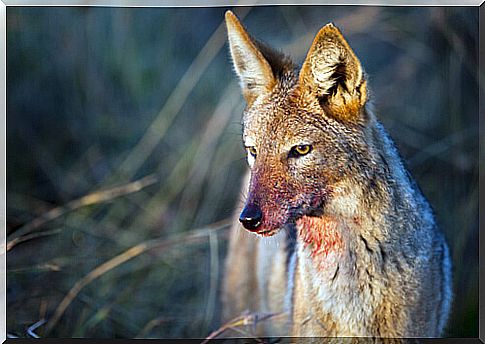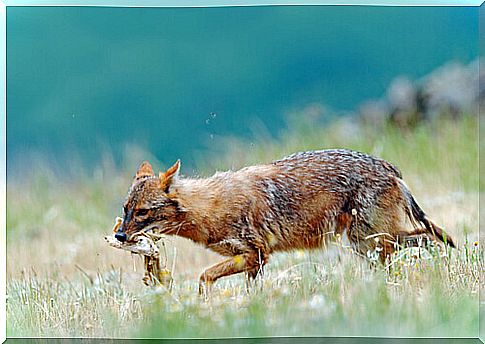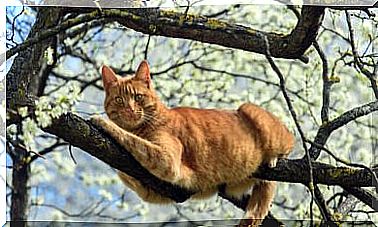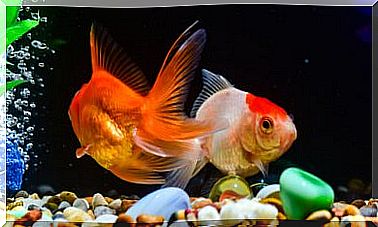The Golden Jackal: Conservation Status

The golden jackal, also known as Canis aureus, is one of the canid species with the greatest global distribution. It is present in many areas of Europe and South Asia.
The expansion of the species – currently underway – in the European territory has caused concern to researchers, environmentalists and residents. This concern focuses on the possible negative effects that its presence could have, mainly due to its nature as a powerful predator, which raises concerns that it will affect the populations of other wildlife species.
Currently, the need has arisen to clarify the origins of jackal populations. This species remained absent in most of Europe until the 19th century, when they began to slowly expand in this territory. The dynamics of its distribution changed since the late 20th century, when the species began to spread extremely rapidly in Europe.
Habitat, reproduction and life cycle
The golden jackal is the most widely distributed species of jackals. It only overlaps biotopes with the black-backed jackal in the savannas of East Africa. This species prefers open country, arid grasslands, and steppe landscapes. Being hunting animals, they have a lot of energy.
Regarding its reproduction, this species lives in pairs and is strictly monogamous. In most jackal families, there are one or two adult members called ‘helpers’.
Helpers are jackals that remain with the parents for a year after reaching sexual maturity, without reproducing, to help care for the next litter. Litters can be from one to nine puppies.

The gestation period is 63 days, the weight at birth is 200 to 250 grams, and the cubs are suckled for about eight weeks; and both parents provide food and protection. According to certain studies, sexual maturity reaches 11 months and they can live 16 years in captivity.
Jackals are omnivores, so they don’t exclusively eat meat. In fact, golden jackals consume 54% food of animal origin and 46% of food of plant origin.
While they eat large prey like young gazelles, they also eat quite a few rodents, hares, birds and their eggs, reptiles, frogs, fish, insects, and fruits. Sometimes they eat carrion.
Economic importance of the jackal for humans: positives and negatives
Golden jackals play an important role in sanitation, as they eat garbage and carrion in cities and towns. In addition, they benefit agriculture by preventing increases in the number of rodents.
When this animal is bred in captivity it can be domesticated. They come home and behave much like a dog, except for the fact that they remain shy around strangers and do not allow themselves to be petted by them.
However, jackals can also affect humans in negative ways, which is that they can raid crops and attack flocks of sheep. Also, being wild hunting animals, golden jackals could be involved in the spread of rabies.

Conservation status of golden jackals
The golden jackal is prevalent in Europe and is not threatened. According to the categories and criteria of the International Union for Conservation of Nature (IUCN) red list, it is considered a species of ‘least concern’.
Of course, the golden jackal has already been declared a strange and potentially invasive species in all the Baltic states. And it is that its status requires a careful review. To be considered an invasive alien species (IAS), you must meet at least three criteria:
- Not being native: alien, introduced by people.
- Be a threat to biological diversity at the local scale.
- Present rapid population growth.
Although an exponential increase in population size has been observed, as in Hungary, the other two criteria have not been met.
Is the jackal singled out for no reason?
The expansion of the golden jackal towards northern Europe is obviously the result of natural migration. Furthermore, there is no evidence of a detrimental effect on local fauna. There are also no major complaints that golden jackals cause harm to domestic animals reported from Europe.

Occasional reports of cattle predation by jackals are believed to be often exaggerated. Also, they may be related to misidentification. This conclusion derives from the inspection, and is that forensic genetics are used in some of the reported cases.
Regarding the health risk, recent studies indicate that the parasite load in the European golden jackal is similar or lower than that of other carnivores, such as the red fox and the gray wolf, in the region. There are also no known attacks by jackals on people.
For these various reasons, concerns regarding the serious negative impacts of the expansion of the golden jackal in Europe still appear to be unfounded.
What steps should be taken?
The expansion of the golden jackal in large territories seems to justify the beginning of international action focused on the management of the species in Europe. Various bodies have suggested that it is time to develop cross-border management documents and strategies.
These strategies would be similar to the management that is developed in the case of large carnivores in Europe. The golden jackal is listed as an Annex V species in the EU Habitats Directive. As such, it must be legally protected in all EU member states; Failure to comply with this rule has legal implications.









